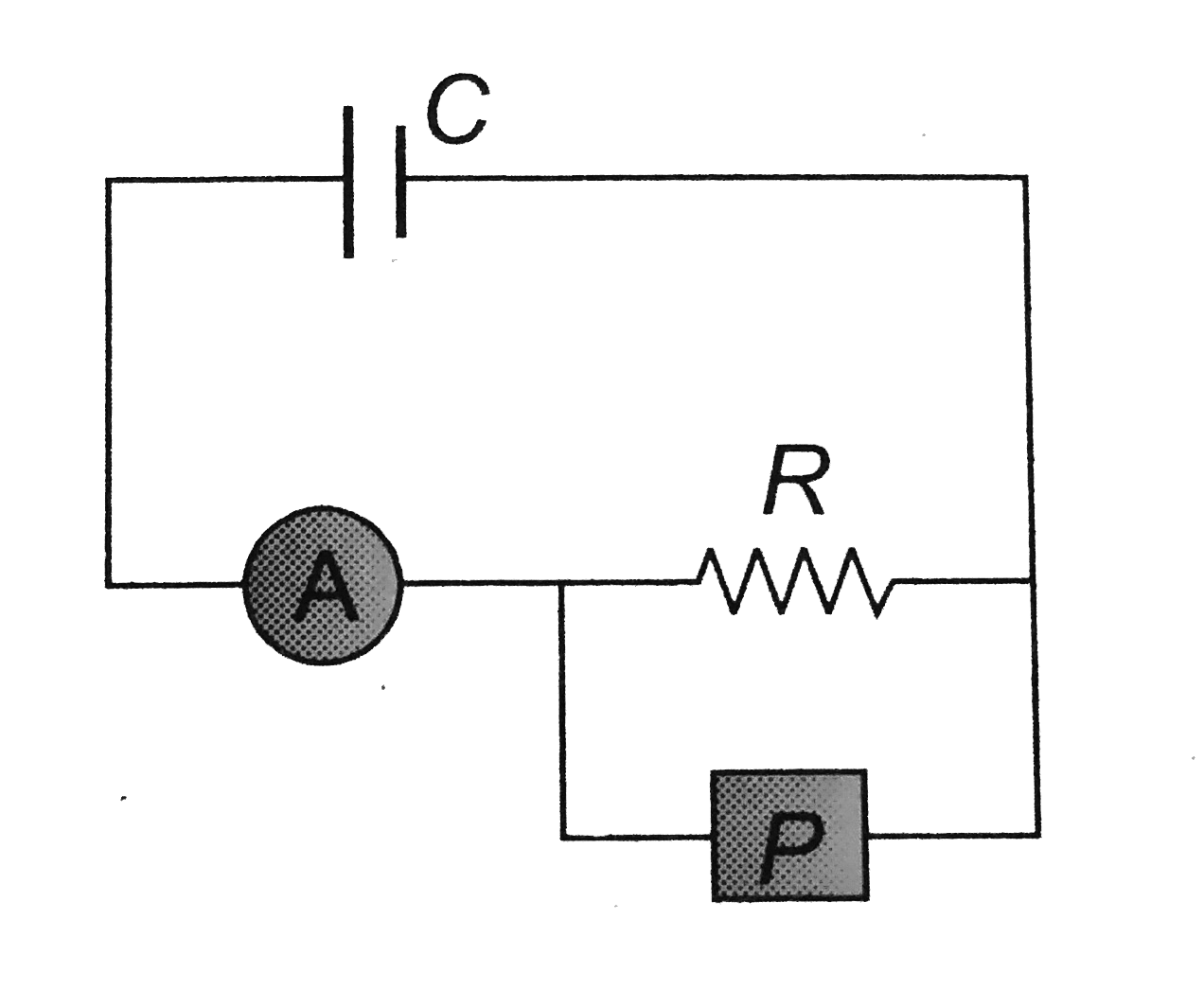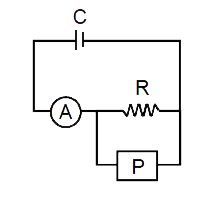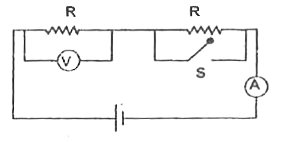A voltmeter and an ammeter are joined, in series to an ideal cell, giving reading V and A respectively. If a resistance equal to the resistance of the ammeter is now joined in parallel to the ammeter then :
V will not change
V will increase slightly
A will become exactly half to its initial value
A will become slightly more than half of its initial value
The correct Answer is:B, D
Step by step video, text & image solution for A voltmeter and an ammeter are joined, in series to an ideal cell, giving reading V and A respectively. If a resistance equal to the resistance of the ammeter is now joined in parallel to the ammeter then : by Physics experts to help you in doubts & scoring excellent marks in Class 12 exams.
Updated on:21/07/2023Topper's Solved these Questions
Similar Questions
A particle of mass m is tied to light string and rotated with a speed v along a circular path of radius r. If T=tension in the string and mg= gravitational force on the particle then actual forces acting on the particle are
View SolutionIf C the velocity of light, which of the following is correct?
View SolutionAn ammeter and a voltmeter are joined in sereis to a cell. Their readings are A and V respectively. If a resistance is now joinding parallel with the voltmeter. Then
View SolutionA voltmeter and an ammeter are connected in series to an ideal cell of emfE. The voltmeter reading is V, and the ammeter readings is I. Then
(i) V<E (ii) the voltmeter resistance is V/I
(iii) the potential difference across the ammeter is E−V
(iv) Voltmeter resistance + ammeter resistance = E//I
Correct statements are
View SolutionAn ammeter A of finite resistance, and a resistor R are joined in series to an ideal cell C. A potentiometer P is joined in parallel to R. The ammeter reading is I0 and the potentiometer reading is V0. P is now replaced by a voltmeter of finite resistance. The ammeter reading now is I and the voltmeter reading is V.

View SolutionA voltmeter and an ammeter are joined, in series to an ideal cell, giving reading V and A respectively. If a resistance equal to the resistance of the ammeter is now joined in parallel to the ammeter then :
View SolutionAn ammeter and a voltmeter are joined in sereis to a cell. Their readings are A and V respectively. If a resistance is now joinding parallel with the voltmeter. Then
View SolutionAn ammeter A of finite resistance , and a resistor R are joined in series to an idel cell C.A potentiometer P is joined in parallel to R. The ammeter reading is I0 and the potentiometer reading is V0. P is now replaced by a voltmeter of finite resistance . The ammeter reading now is I and the voltmeter eading is V.

View SolutionR प्रतिरोध के एक वोल्टमीटर तथा नगण्य प्रतिरोध के अमीटर को एक नगण्य आंतरिक प्रतिरोध के विद्युत सेल के श्रेणीक्रम में संयोजित किया जाता है अमीटर तथा वोल्टमीटर का पाठ्यांक क्रमशः A तथा है V यदि एक R प्रतिरोध वोल्टमीटर के समान्तर क्रम में जोड़ा जाता है तो A तथा V के मानो पर क्या प्रभाव पड़ेगा ?
View SolutionIn the circuit in figure, V is high resistance voltmeter and A is a low resistance ammeter. Switch S is open. What is the effect on the voltmeter and ammeter reading when switch S is now closed? Voltmeter reading and Ammeter reading respectively

View SolutionAn ammeter and a voltmeter are joined in series to a cell. Their readigns are A and V respectively. If a resistance is now joined in parallel with the voltmeter, then
View Solutionएक अमीटर व एक वोल्टमीटर एक सेल के साथ श्रेणीक्रम में जोड़े जाते हैं। उनके पाठ्यांक क्रमशः A व V है । प्रतिरोध, वोल्टमीटर के साथ समान्तर क्रम में जोड़ा जाता है:
View SolutionAn ammeter A of finite resistance, and a resistor R are joined in series to an ideal cell C. A potentiometer P is joined in parallel to R. The ammeter reading is I0 and the potentiometer reading is V0 . P is now replaced by a voltmeter of finite resistance. The ammeter reading now is I and the voltmeter reading is V.

View SolutionAn ammeter and a voltmeter are j oined in series to a cell. Their readings are A and V respectively. If a resistance is now joined in parallel with the voltmeter
View SolutionAn ammeter of finite resistance and resistor R are connected in series to an ideal cell. The voltmeter wire P is connected in parallel with R. Ammeter and voltmeter wire reading respectively I_(0) And V_(0) is. P is replaced by a voltmeter of finite resistance. Now the reading of ammeter and voltmeter are I and V respectively.
View SolutionAn ammeter and a voltmeter are joined in series to a cell. Their readings are A and V respectively. If a resistance is now joining parallel with the voltmeter. Then
View Solution

